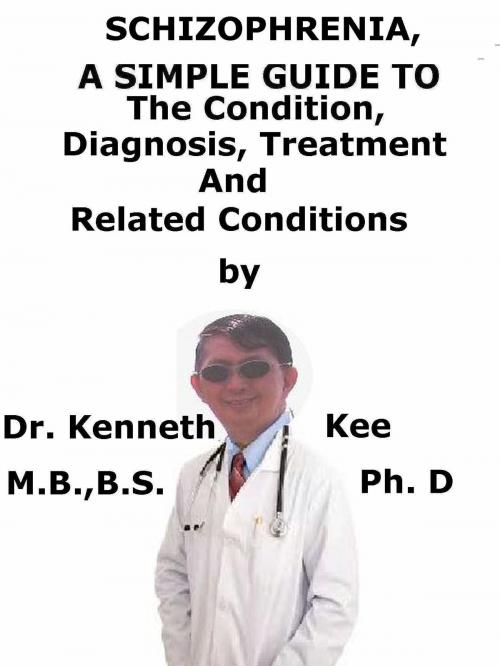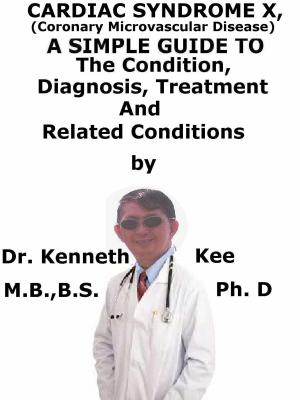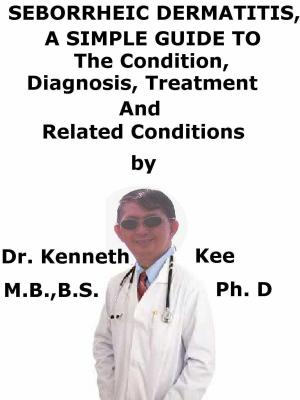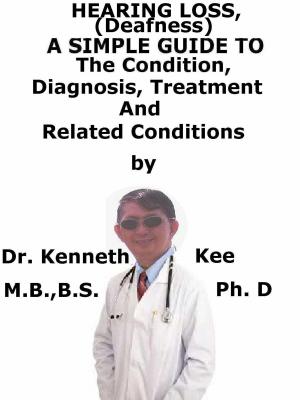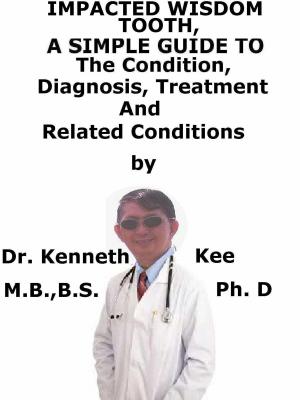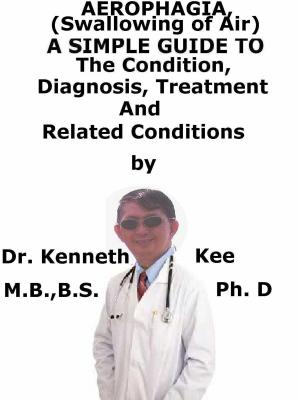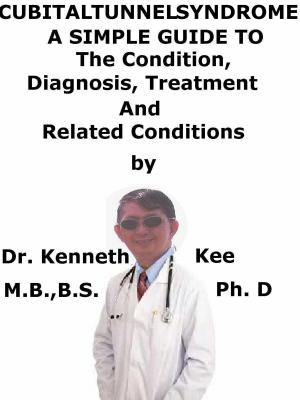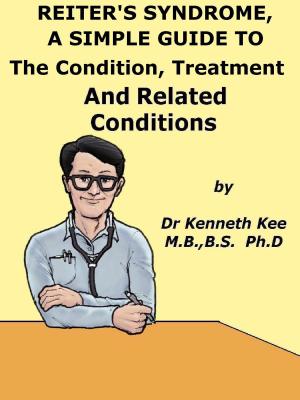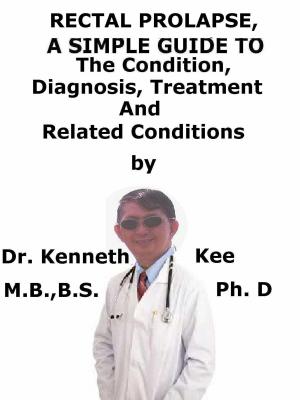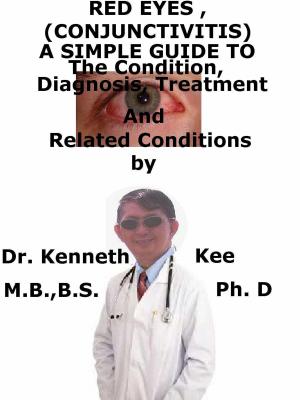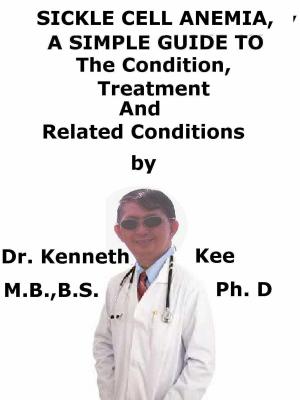Schizophrenia, A Simple Guide To The Condition, Diagnosis, Treatment And Related Conditions
Nonfiction, Health & Well Being, Psychology, Mental Illness| Author: | Kenneth Kee | ISBN: | 9780463745304 |
| Publisher: | Kenneth Kee | Publication: | October 28, 2018 |
| Imprint: | Smashwords Edition | Language: | English |
| Author: | Kenneth Kee |
| ISBN: | 9780463745304 |
| Publisher: | Kenneth Kee |
| Publication: | October 28, 2018 |
| Imprint: | Smashwords Edition |
| Language: | English |
This book describes Schizophrenia, Diagnosis and Treatment and Related Diseases
“I have schizophrenia. I am not schizophrenia. I am not my mental illness. My illness is a part of me.”
– Jonathan Harnisch
Schizophrenia is hearing voices, not doing voices.
- Maria Bamford
If you talk to God, you are praying; If God talks to you, you have schizophrenia.
-Thomas Szasz
Schizophrenia is a complex mental disorder characterized by symptoms involving:
1.Personality
2.Thinking non logically
3.Emotionally unstable responses,
4.Behaving abnormally in social situations
5.Tendency to withdraw from reality to a private personal world
Schizophrenia is a medical disorder that makes it difficult to tell the difference between what is real and not real.
It also makes it difficult to think clearly, have normal emotional responses, and function normally in social situations.
Schizophrenia is a medical disorder of the mind that affects how the patient thinks, feels and behaves.
Its symptoms are described as positive or negative.
‘Positive’ symptoms
These are unusual experiences.
Many people tend to have them from time to time and they do not become a problem.
In schizophrenia, they tend to be much more intense, problematic, pre-occupying and upsetting.
1.Hallucinations
A hallucination happens when the patient hears, smells, feels or sees something - but it is not caused by anything (or anybody) around the patient.
The commonest one is hearing voices.
They sound utterly real.
They normally seem to be coming from outside the patient, even though other people cannot hear them.
The patient may hear them coming from different places, or they may seem to come from a particular place or thing.
Voices can talk to the patient directly or talk to each other about the patient – it can be like over-hearing a conversation.
They can be pleasing but are also discourteous, critical, obnoxious or just plain irritating.
The patient may try to ignore them, talk back to them – or even shout back at them if they are particularly loud or irritating.
The patient may feel that he or she has to do what they tell the patient, even if the patient knows the patient should not.
The patient may wonder if they are they coming from hidden microphones, from loudspeakers, or the spirit world.
Voices are not imaginary – the patient really does hear them - but they are created by the mind.
Scans have shown that the part of the brain that light up when the patient hears voices is the same area that is active when the patient talks, or forms words in the mind.
Other kinds of hallucination
The patient may see things that are not there, or may smell or taste things that are not there.
Some people have discomfort or painful sensations in their body or feelings of being touched or hit.
Delusions
A delusion happens when the patient believes something and is completely sure of it while other people think the patient has misunderstood what is happening.
It is as though the patient sees things in a completely different way from everyone else.
‘Paranoid’ delusions
These are ideas that make the patient feel persecuted or harassed:
‘Negative’ symptoms
The patient starts to lose the normal thoughts, feelings and motivations.
The patient loses interest in life.
The energy, emotions and ‘get-up-and-go’ just drain away.
Negative symptoms are less remarkable than positive symptoms, but can be really hard to live with.
The patient can listen to voices and have negative symptoms, but may not have delusional ideas.
Schizophrenia is a life-long illness.
Most people with this disorder require taking anti-psychotics for life
Psychosocial treatment is important together with medicines.
TABLE OF CONTENT
Introduction
Chapter 1 Schizophrenia
Chapter 2 Causes
Chapter 3 Symptoms
Chapter 4 Diagnosis
Chapter 5 Treatment
Chapter 6 Prognosis
Chapter 7 Schizoid Personality Disorder
Chapter 8 Obsessive Compulsive Disorder
Epilogue
This book describes Schizophrenia, Diagnosis and Treatment and Related Diseases
“I have schizophrenia. I am not schizophrenia. I am not my mental illness. My illness is a part of me.”
– Jonathan Harnisch
Schizophrenia is hearing voices, not doing voices.
- Maria Bamford
If you talk to God, you are praying; If God talks to you, you have schizophrenia.
-Thomas Szasz
Schizophrenia is a complex mental disorder characterized by symptoms involving:
1.Personality
2.Thinking non logically
3.Emotionally unstable responses,
4.Behaving abnormally in social situations
5.Tendency to withdraw from reality to a private personal world
Schizophrenia is a medical disorder that makes it difficult to tell the difference between what is real and not real.
It also makes it difficult to think clearly, have normal emotional responses, and function normally in social situations.
Schizophrenia is a medical disorder of the mind that affects how the patient thinks, feels and behaves.
Its symptoms are described as positive or negative.
‘Positive’ symptoms
These are unusual experiences.
Many people tend to have them from time to time and they do not become a problem.
In schizophrenia, they tend to be much more intense, problematic, pre-occupying and upsetting.
1.Hallucinations
A hallucination happens when the patient hears, smells, feels or sees something - but it is not caused by anything (or anybody) around the patient.
The commonest one is hearing voices.
They sound utterly real.
They normally seem to be coming from outside the patient, even though other people cannot hear them.
The patient may hear them coming from different places, or they may seem to come from a particular place or thing.
Voices can talk to the patient directly or talk to each other about the patient – it can be like over-hearing a conversation.
They can be pleasing but are also discourteous, critical, obnoxious or just plain irritating.
The patient may try to ignore them, talk back to them – or even shout back at them if they are particularly loud or irritating.
The patient may feel that he or she has to do what they tell the patient, even if the patient knows the patient should not.
The patient may wonder if they are they coming from hidden microphones, from loudspeakers, or the spirit world.
Voices are not imaginary – the patient really does hear them - but they are created by the mind.
Scans have shown that the part of the brain that light up when the patient hears voices is the same area that is active when the patient talks, or forms words in the mind.
Other kinds of hallucination
The patient may see things that are not there, or may smell or taste things that are not there.
Some people have discomfort or painful sensations in their body or feelings of being touched or hit.
Delusions
A delusion happens when the patient believes something and is completely sure of it while other people think the patient has misunderstood what is happening.
It is as though the patient sees things in a completely different way from everyone else.
‘Paranoid’ delusions
These are ideas that make the patient feel persecuted or harassed:
‘Negative’ symptoms
The patient starts to lose the normal thoughts, feelings and motivations.
The patient loses interest in life.
The energy, emotions and ‘get-up-and-go’ just drain away.
Negative symptoms are less remarkable than positive symptoms, but can be really hard to live with.
The patient can listen to voices and have negative symptoms, but may not have delusional ideas.
Schizophrenia is a life-long illness.
Most people with this disorder require taking anti-psychotics for life
Psychosocial treatment is important together with medicines.
TABLE OF CONTENT
Introduction
Chapter 1 Schizophrenia
Chapter 2 Causes
Chapter 3 Symptoms
Chapter 4 Diagnosis
Chapter 5 Treatment
Chapter 6 Prognosis
Chapter 7 Schizoid Personality Disorder
Chapter 8 Obsessive Compulsive Disorder
Epilogue
